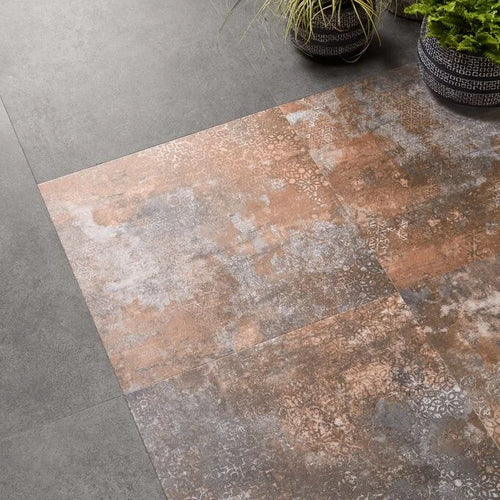
Can Luxury Vinyl Tiles Be Used For Outdoor Areas?
Share
Most of the orders we receive for our fantastic range of luxury vinyl tiles are for indoor installations, with options and choices ideal for living rooms, rental accommodation, offices and even industrial areas such as warehouses.
A rarer but not necessarily uncommon question we get asked is whether LVT can be installed outside, and whilst generally the answer is yes, it can be a slightly more complicated installation.
To understand why, here are some of the reasons why people and building managers might consider LVT for outdoor rooms, paths and porches, and whether you need to make any compromises if you want to.
Why Choose Luxury Vinyl Tiles For Outdoor Spaces?
Aside from the general principle of wanting an outdoor space to look as fantastic as possible, there are a remarkable number of use cases for LVT outdoors.
One of the most immediate reasons is a general trend for natural materials; much like how interior designers have gravitated towards natural materials, outdoor areas are often enhanced by the use of stone pavers or wooden decking.
There is a motivation to have a similar-looking space outdoors, but given that outdoor patio materials can be just as cost-prohibitive as their indoor equivalents, landscapers are often looking for a cost-effective alternative.
Beyond this, however, there are many types of spaces that connect indoor and outdoor areas of a building, such as porches, sunrooms, verandas, covered patios, conservatories and receptions. Some paths between buildings in a complex may also want to use consistent flooring, which may sometimes involve bringing the indoors out.
Can It Work Outdoors?
Surprisingly, LVT can work as the flooring solution for more outdoor spaces than you might expect, and whilst there are some considerations and compromises that you might need to think about, it is more often than not a viable solution.
One of the benefits is that, whilst the truly easiest installation options are not available, it is easier and faster to install on a suitable subfloor than stone or wooden decking, and the protective layers that make it useful for high-traffic indoor areas similarly help make it easy to clean outdoors as well.
It is also designed to flex and adjust, which means that within a particular tolerance, it will not necessarily break or warp on warm or cold days.
It is water-resistant to a greater degree than wood or stone, which typically means it can be used without a suitable outdoor sealant. This also makes it more resistant to mould and damp than unsealed wood and even stone alternatives.
Finally, because of the multilayer design, it is often more comfortable to walk on than an equivalent stone, wood or concrete outdoor floor.
What Are The Compromises?
Whilst there are exceptions and ways to create compromises, LVT can be affected by sunlight, humidity and ambient temperatures, all three of which are impossible to control outside.
Sunlight can cause the surface to fade over time, and being outside and completely exposed to sunlight can cause the photography layer and some of the protective layer to wear out more quickly due to the effects of ultraviolet radiation.
Similarly, ambient atmospheric temperatures can cause vinyl to expand and contract. This is part of the reason why many LVT products require you to place the box of tiles in the centre of the room for a few hours before your installation to ensure they have acclimatised.
As outdoor temperatures are prone to more extreme temperature variations, LVT is prone to greater expansion, meaning that loose-lay and floating click-together types of LVT are prone to becoming unsettled in a way that they would not indoors.
Finally, whilst LVT is resistant to water, some types of LVT are not necessarily resistant to the effects of humidity, which can lead to warping of planks or tiles.
If it is intended for a covered outdoor area that is almost completely shaded, many of these issues can be avoided simply by choosing the right location or taking advantage of additional shading.
As well as this, look for LVT products that have UV resistance to slow down the effects of wear and fade from sunlight. It will not stop it entirely, but it can considerably increase the lifespan of your outdoor flooring.
Furthermore, make sure that you opt for a 100 per cent waterproof product, as this will remove issues which can occur if water pools and seeps inside the gaps between planks.
Finally, choose thicker planks, as you will generally need greater durability and stability for outdoor purposes.
